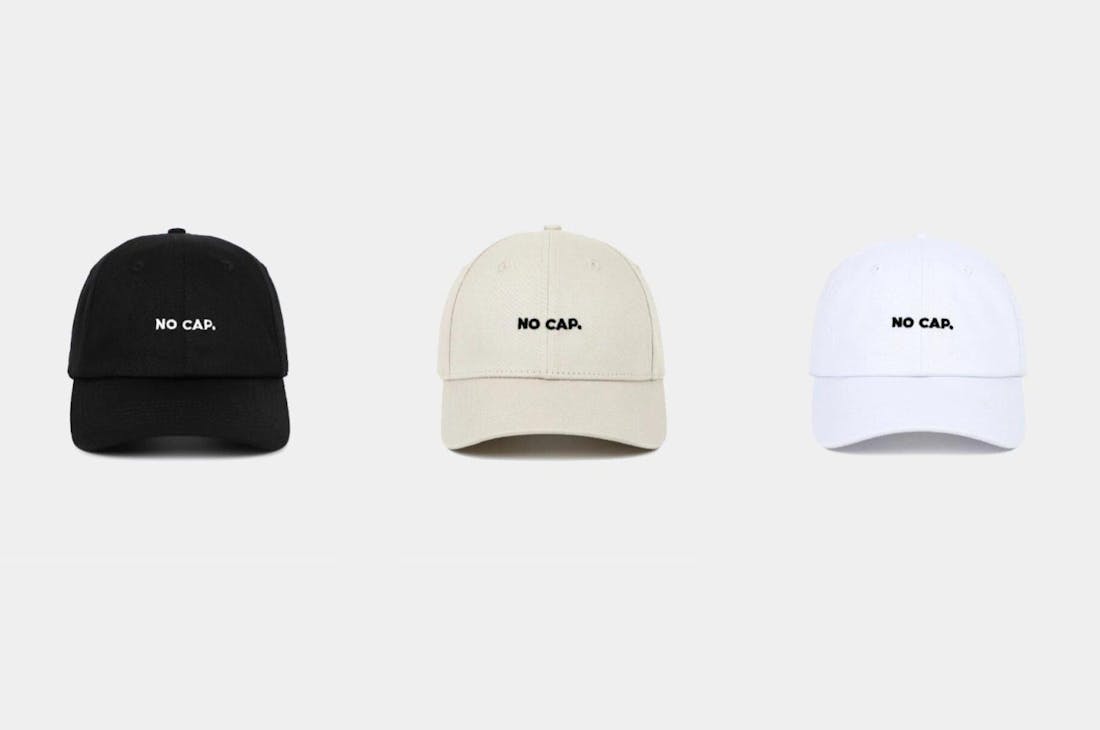Recently, the editorial staff of BonneGueule published an editorial where each member gave their opinion on the cap .
Some loved him without an ounce of hesitation, while others were more reserved about him. But with one exception
Well this time... I'm putting myself a bit at odds with the rest of the team.
I don't wear the cap. Or at least, not yet!
There are several reasons for this, and I realized that my explanations had led me to share with you some ideas around the cap.
For this carte blanche, we will therefore talk about:
- From the myth of “the head with a cap”
- The question of head sizes , shapes and morphologies
- From my “magic tip” that helps with wearing headwear
- And finally, the “young” connotation of the piece
1. Are there really “heads with caps”?
“Oh yeah, but I don’t have a head for a hat/hat/cap!” (Delete where applicable).
This question mentioned in the introduction is a stubborn myth, in which I also believed for a long time.
Technically, this is completely wrong : caps (like all other headwear) can be chosen with a shape, size, color and style to suit its wearer.
It doesn't matter what shape your head or face is.
And besides, in the old days, if you walked around town, you would have had a harder time finding a bare-headed man than a man with a hat in the street.
It would be absurd to believe that they all wore hats, when it didn't suit the majority of them...
But if it's false, then why do we continue to believe in the famous "cap head"? And why is it so commonly accepted?
2. Ready to wear = standardized sizes
The first element of the answer is the one that concerns almost all our clothes for almost a century: ready-to-wear is omnipresent , and everything that is measured (or even half-measured) belongs to the micro-niche .
However, for other clothing such as suits or shirts, we know that tailor-made products exist. And of course, we also know that there are differences in cut from one brand to another, retouchers...
In short, due to the existence of this variety of offers, we are aware that to wear these pieces, we must find them or have them made in a form that suits us!
But for headwear?
I'm not even sure most people know that they come in multiple sizes. So make them tailor-made? Let's not talk about it... Today, there must be even fewer hatters than tailors.

On this infographic, note the differences in shape that we can have just for the "baseball" cap... And imagine what that means for our faces. ( source cncaps)
But to return to the cap in particular, it is difficult to blame them since it is indeed a product that we cannot find
And above all, the real problem with the cap

Hey, a Ralph Lauren cap on Mr Porter. What do you mean it's not the right size for your head? Well, too bad.
However, a hat is normally chosen on a head circumference , and within a centimeter, you change size.
So of course, for the cap, we can count on the adjustment of the back to adapt it to the majority of customers.
But honestly, when you start to have three or four centimeters of head circumference too much or less than the brand's standard... It's not great.
The adjustment will make the cap hold, yes, but it will sit strangely .
It won't look deep enough on larger heads, and will make a weird clump of fabric at the back for smaller ones.

I was very excited about our first green cap last year. The prototype suited me very well. Guess what ? The final version was too big for me... And apparently not big enough for other customers.
So if like me you thought about "not having a cap head": it is very likely that you simply have a large or small head, and that you have never tried one in your size , or whose shape It simply suits you.
You will probably have to be a little patient to find one that suits you well. For my part, it is not yet done .
3. The magic tip for all headwear
While I'm at it, I'm going to let you in on a secret that I discovered one winter evening, while I was desperately trying to appreciate a hat I had just bought.
Have you ever put on a hat and found that you looked like a banana?
Or a hat, or a cap, and had the impression that that was all we saw?
If so, in addition to taking into account the previous passage on size, also try this technique . It applies to your caps as it does to all headgear:
Gradually lift your hat backwards so that it reveals a little more of your forehead, until you reach a point that seems harmonious to you .
Normally, this should solve the problem faced by those who are not used to wearing headgear: it covers your forehead too much and "eats" your face .

Jaston Statham, because of his very strong-boned face, has every interest in wearing a headgear that is fairly low on the forehead. His face will not be “eaten”. (Photo by Bobby Bank/WireImage)
Besides, bald people (or even those who have lost a little hair on the gulfs) can benefit from this : our eye interprets the line where your cap stops as the line where your hair should stop . Or in other words, like the end of your forehead.
You can play with it, and at that point, the headgear becomes an asset to your face rather than a burden.

Yes, certainly Jason Statham, he is the seen and seen example of the handsome bald guy par excellence... But still, compare with above. (Photo by Toni Anne Barson/WireImage)
And bonus tip for the road: if your hair allows it, leaving a small strand sticking out can make this effect even more convincing.
It's a tactic seen again and again among twink singers in boy bands , and it's not for nothing...

I'm not very up to date on boy bands, so I Googled "Jonas Brother Hat". (Photo by Walter McBride/Corbis via Getty Images)
Well, this is a bit taken to the extreme. But it illustrates the point very well.
3. The right time for the cap
The last point that may have dissuaded me from wearing the cap until now is of course that of the connotation .
And more particularly, that of age .
Without getting into endless sociological theories, I would say that before the age of 30, we often try to “grow old”.
Well... No, not exactly.
To be more fair, I would say that we ask ourselves the question of whether we are not wearing clothes that make us look too “teenager” .

I like to prove what I say, so I suggest you compare this Ssense cap, on a model with a smooth and youthful face...
And of course, I say "we", but I do not claim to include all of humanity with me. It depends on the people, the culture, the environments, etc., etc. Of course, “it depends” . But still...
What I have seen from experience is that after the age of twenty, we leave high school, we start higher education, or even directly get a job. And there, we understand that in the "adult world", an air of "experience" and "maturity" can arouse confidence, can enhance us. Professionally, and not only that!

... The exact same model at l'Exception, but on a mannequin that looks like a thirty-year-old with a falsely unkempt beard and hair. It doesn't quite have the same impression, does it?
So, without necessarily going towards aping and taking out the double-breasted suit three times a week at the age of 20, I believe that we tend to unconsciously avoid certain pieces which reflect an air of youth and assertive relaxation.
But firstly, times change , and so do codes.
The "casualization" of our styles has only made great strides in recent decades, which delights streetwear fans and makes sartorialists cry.
In such a context, the cap gradually loses its old "neglected" image and certainly gains something "cool".

Obviously, it depends on the stylistic memories you associate with childhood. In mine, there is that.
And secondly, as you approach your thirties (which is my case), or even exceed it...
I believe we are experiencing the opposite paradigm. After 30, we seek to “rejuvenate” ourselves.
Or at least, we want to avoid wearing things that make us look old.
And anyway, who will believe that you are a teenager because of a cap? That's it! Your face says otherwise. You wouldn't fool anyone even if you wanted to. 😉

And then, I believe that it is at this age that we realize that men of thirty or forty are only men of twenty who have existed for ten or twenty years longer. So while we're at it, the cap... Why not?
I don't know about you, but I feel ready to try again.




